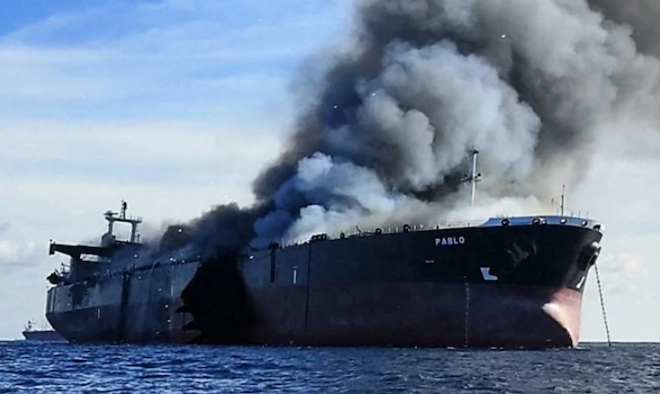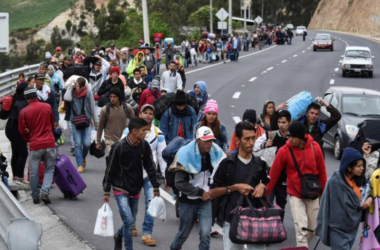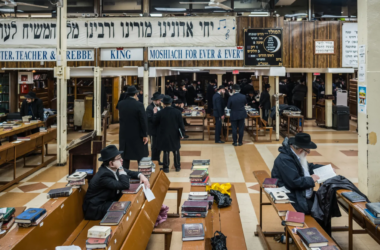Two large oil tankers caught fire on Friday after colliding in waters near Singapore, the world’s largest refueling port. The incident resulted in two crew members being airlifted to a hospital, while others were rescued from life rafts, according to authorities and one of the involved companies.
The collision occurred between the Singapore-flagged tanker Hafnia Nile and the Sao Tome and Principe-flagged tanker Ceres I. The vessels were approximately 55 kilometers (34 miles) northeast of Singapore’s Pedra Branca, on the eastern approach to the Singapore Straits, reported the Maritime and Port Authority of Singapore (MPA).
Hafnia Nile’s owner confirmed that their vessel was involved in the collision with Ceres I. The MPA stated that all 22 crew members of the Hafnia Nile and 40 crew members of the Ceres I were accounted for. The MPA was alerted to the fire at 6:15 a.m. local time (2215 GMT).
Photographs released by the Singapore Navy depicted thick black smoke rising from one of the tankers, with crew members being rescued from life rafts and flown to the hospital.
Environmental authorities in neighboring Malaysia have been informed to prepare for potential oil spills. The Hafnia Nile, a Panamax tanker with a capacity of 74,000 deadweight tons (IMO 9766217), was carrying about 300,000 barrels of naphtha, according to ship-tracking data from Kpler and LSEG.
It was not immediately clear what fuel the Ceres I (IMO 9229439) was carrying. This tanker, classified as a very-large-crude-carrier (VLCC) with a capacity of 300,000 deadweight tons, was last noted to be carrying Iranian crude between March and April, as per ship-tracking data.
Prior to the fire, the Ceres I had been stationed at the same location since July 11, according to LSEG shipping data. The area is known for being used by “dark fleet” ships for transferring Iranian oil, bypassing US sanctions, noted Michelle Wiese Bockmann, principal analyst at Lloyd’s List Intelligence. The Ceres I has a history of transporting or shipping Iranian oil in violation of US sanctions and has been involved in shipping Venezuelan oil to China in recent years.
The China-based owner of Ceres I was not immediately available for comment. China has consistently stated its opposition to unilateral sanctions.
Singapore, Asia’s largest oil trading hub and the world’s biggest bunkering port, is surrounded by critical trade waterways linking Asia, Europe, and the Middle East.








